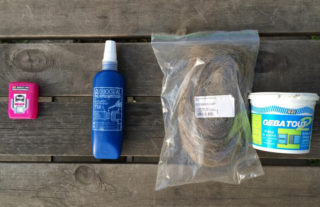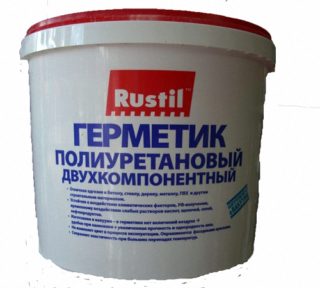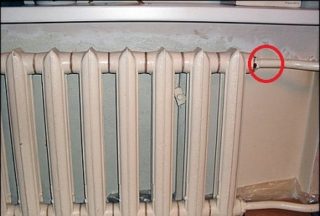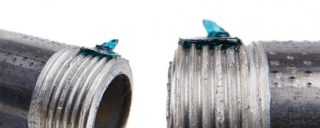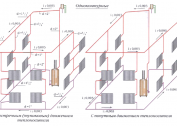Sealant for heating pipes can be purchased at any hardware store. A wide variety of proposed varieties forces the user to familiarize themselves with them in more detail. To do this, you should deal with the features of each of the proposed items and the rules for their selection.
The need for sealing
Sealant for the heating system is in demand in the following cases:
- installation of water conduits when pipes are docked at interfaces;
- sealing threaded joints in heating systems;
- the elimination of small-sized cracks that often appear during the operation of pipe billets;
- elimination of leaks that eventually form at the junction of pipes and fittings and can lead to a decrease in pressure in them.
In accordance with each of the situations considered, a type of composition is selected that is optimal for the stated purposes. However, the use of universal heat-resistant sealants for heating pipes is not ruled out.
Varieties of sealant
The domestic manufacturer offers a huge assortment of sealing compounds that have their own characteristics, advantages and disadvantages. The right choice of the most suitable name is possible only after familiarization with each of them.
Acrylic
Sealant for heating from the group of acrylic oligomers is the simplest mixture of special polymers. It is suitable for sealing heating pipelines, but it is very sensitive with extreme heat and frost: in the first case it cracks, in the second it hardens and crumbles. Therefore, the use of these compounds is allowed only for internal work. Despite the fact that acrylic sealants belong to the group of moisture-resistant, with constant contact with water, their adhesive properties deteriorate. They are used only for a limited range of works related to repairing cracks and sealing joints in steel and polypropylene pipes.
Thiocolov
Polysulphide or thiocol compositions are among the most durable of all known varieties of sealants. In their manufacture, the following components are used:
- base;
- hardening heat-resistant pastes;
- additives to accelerate vulcanization.
A thiokol mixture is prepared immediately before it is applied to the protected place, the prepared portion must be used within 2 hours.
The advantages of thiokol sealants include:
- structure elasticity;
- resistance to chemical reagents, UV, and also to fuels and lubricants;
- possibility of application in a wide range of temperatures (from -50 to +1300 degrees);
- good adhesion to steel structures.
Disadvantages: toxicity and high cost of the material, as well as the need for its preparation in small portions.
Silicone
Silicone sealants are among the most popular formulations on the market. With their help, it is possible to seal joints of any complexity, and also to fix the detected leak without problems. They can be used with temperature fluctuations from 32 to 62 degrees.
Silicone based sealants have everything necessary for high-quality sealing: strength, elasticity and the ability to penetrate hard-to-reach areas.When buying, it is important to carefully study the composition of the purchased sealant. The acids included in some of them are very active and can lead to the destruction of the compound.
Polyurethane
This type of sealant, along with the polysulfide variety, also represents a group of oligomers widely used in construction. The features of polyurethane compounds include resistance to external influences, as well as long service life. They are available in two versions: single and 2-component. The first samples are cheaper, but freeze longer. In addition, they are characterized by increased elasticity, good adhesion, and resistance to strong heating and corrosion. Due to the high cost, this type of sealant is practically not used for domestic purposes.
Liquid
Liquid type sealants are used where there is no access to the damaged area or leak zone. The principle of its action is based on the fact that the composition is poured into the cavity of the pipes together with the coolant. In the damaged section of the pipeline, it reacts with oxygen and seals the gap as a result of polymerization. The following types of liquid structures are distinguished:
- used in aquatic environments;
- used in systems filled with antifreeze;
- used for sealing metal or plastic pipes.
There are also anaerobic sealants for heating or polymer gels used to seal threads.
Special Sealant Requirements
The sealant for heating radiators and pipes of the heating system supplied to them must satisfy the following requirements:
- ease of use;
- fire resistance and resistance to loads;
- high adhesion and strength;
- safety of use.
Such structures must quickly set, providing the required sealing effect at the joints of pipes and batteries used for space heating. These factors must be taken into account when choosing the appropriate type of protective composition.
Preparatory Activities
Preparatory procedures prior to troubleshooting or leaks are illustrated with fluid structures. Before their use, it will be necessary to clarify the required concentration of the composition added to the hot coolant circulating through the pipes. When determining this parameter, it is assumed that for every 80 liters of carrier, one liter of sealing agent is sufficient. Its total volume is calculated by adding these indicators for the entire pipeline network - the consumption of sealant for heating batteries and boiler elements. The latest data is taken from the technical passport, which allows you to take into account all possible options for their practical use.
Preparatory measures in the case of dry compositions are reduced to a thorough cleaning of the sealing site.
Application methods
According to this indicator, all known compounds are:
- for external use;
- for internal use;
- applied to threads or gaskets to improve the quality of joints.
The choice of the desired composition depends on the nature of the damage and the availability of the place where it is planned to be used.
